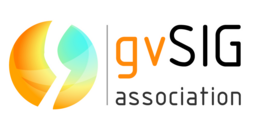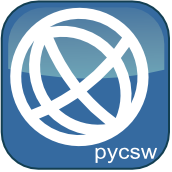开源地理空间基金会 OSGeo

相关站点:
OSGeo官方站点:http://www.osgeo.org/home
OSGeo中国中心:http://www.osgeo.cn/
OSGeo GitHub站点:https://github.com/OSGeo
1. 关于OSGeo基金会
1.1 OSGeo 简介
1.2 OSGeo 使命
1.3 OSGeo 目标
2. OSGeo 项目
2.1 网络制图(Web Mapping)
2.1.1 deegree
2.1.2 geomajas
2.1.3 GeoMOOSE
2.1.4 GeoServer
2.1.5 Mapbender
2.1.6 MapFish
2.1.7 MapGuide Open Source
2.1.8 MapServer
2.1.9 OpenLayers
2.2. 桌面GIS应用(Desktop Applications)
2.2.1 GRASS GIS
2.2.2 gvSIG
2.2.3 Marble
2.2.4 QGIS
2.3 地理空间库(Geospatial Libraries)
2.3.1 FDO
2.3.2 GDAL/OGR
2.3.3 GEOS
2.3.4 GeoTools
2.3.5 OSSIM
2.3.6 PostGIS
2.4 元数据目录(Metadata Catalogs)
2.4.1 GeoNetwork
2.4.2 pycsw
2.5 外延项目(Outreach Projects)
2.5.1 Public Geospatial Data
2.5.2 Education and Curriculum
2.5.3 OSGeo Live
3. 培育项目(Incubating Projects)
3.1 Web Mapping
3.1.1 istSOS
3.1.2 PyWPS
3.1.3 ZOO-Project
3.2 Desktop Applications
3.2.1 Opticks
3.3 Geospatial Libraries
3.3.1 MetaCRS
Sub-projects
3.3.2 Orfeo ToolBox (OTB)
3.4 内容管理系统(Content Management Systems)
3.4.1 GeoNode
4. OSGeo社区项目(OSGeo Community Projects)
4.1 Geoinformatica
4.2 GeoWebCache
4.3 pgRouting
4.4 Virtual Terrain Project
1. 关于OSGeo基金会
1.1 OSGeo 简介
OSGeo(开源地理空间基金会)(Open Source Geospatial Foundation)是一个非盈利组织。其主要目标是支持和推广开源地理空间技术和数据的协作开发。OSGeo基金会向许多开源地理空间社区提供了财政、组织和法律方面的支持。它同时也是独立的法人组织机构,社区成员可以贡献代码、资金和其他资源。这些贡献的资源将会以公众利益为目标来维护。OSGeo也作为开源地理空间社区的延伸,提供了公共论坛以及跨项目协作的共享基础。
1.2 OSGeo 使命
To support the development of open source geospatial software, and promote its widespread use.
支持开放源代码的地理空间软件发展及其推广应用。
1.3 OSGeo 目标
- 为基金会项目提供诸如信息基础设施、基金和法律等方面的资源支持
- 促进免费地学数据的使用——没有数据,软件就是没有任何作用
- 促进开源软件在地理空间业界的使用,包括公关、培训、拓广等活动
- 鼓励开放标准的实现和基于标准的基金项目互操作
- 为了建立项目的“品牌”,确保基金会项目的高质量
- 使基金会和相关软件更容易地被用户使用,例如软件打包、文档等
- 通过开设课程、提供支持等推进OSGeo软件在教学中的使用
- 鼓励OSGeo不同语言(eg. Java/C/Python)和平台(eg. Win32, Unix, MacOS)社区之间的交流与合作
- 通过软件和社区拓展服务的国际化来支持全球社区对基金会项目的使用和贡献
- 组织年度 OSGeo 会议,可能与相关组织合作(eg. EOGEO).
- 为优秀的OSGeo社区服务者颁发 Sol Katz 奖
2. OSGeo 项目
部分项目网站以无法访问,故没有在文中列出。
2.1 网络制图(Web Mapping)
2.1.1 deegree

deegree is open source software for spatial data infrastructures and the geospatial web. deegree offers components for geospatial data management, including data access, visualization, discovery and security. Open standards are at the heart of deegree.
2.1.2 geomajas

Geomajas is a collection of free and open source GIS libraries, tools and API's for a complete end-to-end web mapping solution.
Geomajas is the open source platform to create Web GIS applications :
- Display & edit geographic data from multiple sources
- Out-of-the-box functionality through plugins & map widgets
- Enterprise-ready with integrated security
- Java | GWT | Javascript API
2.1.3 GeoMOOSE

GeoMOOSE is a Web Client JavaScript Framework for displaying distributed cartographic data. GeoMOOSE has a number of strengths including modularity, configurability, and delivers a number of core functionalities in its packages. GeoMOOSE is also very light weight for servers making it easy to handle a large number of users, with a large number of layers, and a large number of services without stressing a server.
The GeoMOOSE core is written using JavaScript and HTML. It is entirely possible to run GeoMOOSE with nothing more than a basic web server (Nginx, Apache, IIS). But besides the basic client core, GeoMOOSE also comes prepackaged with a number of built in services written in PHP. These services add the ability to perform drill-down identify operations, selection operations, and search data sets. If you have existing scripts that perform similar functions, GeoMOOSE can be tuned to work with those services, no matter which language they were written.
2.1.4 GeoServer

GeoServer is a Java-based software server that allows users to view and edit geospatial data. Using open standards set forth by the Open Geospatial Consortium (OGC), GeoServer allows for great flexibility in map creation and data sharing.
2.1.5 Mapbender

Mapbender is the back office software and client framework for spatial data infrastructures. The software is implemented in PHP und JavaScript and licenced under MIT. It provides a data model and web based interfaces for displaying, navigating and interacting with OGC compliant map services.
Mapbender3 is the successor of the Mapbender 2 Version and is based on the frameworks Symfony2, JQuery and OpenLayers.
2.1.6 MapFish

MapFish is a flexible and complete framework for building rich web-mapping applications. It emphasizes high productivity, and high-quality development.
MapFish is based on the Pylons Python web framework. MapFish extends Pylons with geospatial-specific functionality. For example MapFish provides specific tools for creating web services that allows querying and editing geographic objects.
MapFish also provides a complete RIA-oriented JavaScript toolbox, a JavaScript testing environment, and tools for compressing JavaScript code. The JavaScript toolbox is composed of the ExtJS,OpenLayers , GeoExt JavaScript toolkits.
MapFish is compliant with the Open Geospatial Consortium standards. This is achieved through OpenLayers or GeoExt supporting several OGC norms, like WMS, WFS, WMC, KML, GML etc..
MapFish is open source, and distributed under the BSD license.
2.1.7 MapGuide Open Source

MapGuide Open Source is a web-based platform that enables users to develop and deploy web mapping applications and geospatial web services. MapGuide features an interactive viewer that includes support for feature selection, property inspection, map tips, and operations such as buffer, select within, and measure. MapGuide includes an XML database for managing content, and supports most popular geospatial file formats, databases, and standards. MapGuide can be deployed on Linux or Windows, supports Apache and IIS web servers, and offers extensive PHP, .NET, Java, and JavaScript APIs for application development. MapGuide Open Source is licensed under the LGPL.
2.1.8 MapServer

MapServer is an Open Source platform for publishing spatial data and interactive mapping applications to the web. Originally developed in the mid-1990’s at the University of Minnesota, MapServer is released under an MIT-style license, and runs on all major platforms (Windows, Linux, Mac OS X). MapServer is not a full-featured GISsystem, nor does it aspire to be.
The MapServer Project Steering Committee (PSC), sanctioned by OSGeo, manages and administers the project which is maintained, improved, and supported by developers and users from around the world. See the community activities page for mailing lists, etc.
2.1.9 OpenLayers
OpenLayers makes it easy to put a dynamic map in any web page. It can display map tiles, vector data and markers loaded from any source. OpenLayers has been developed to further the use of geographic information of all kinds. It is completely free, Open Source JavaScript, released under the 2-clause BSD License (also known as the FreeBSD).
2.2. 桌面GIS应用(Desktop Applications)
2.2.1 GRASS GIS

GRASS GIS, commonly referred to as GRASS (Geographic Resources Analysis Support System), is a free and open source Geographic Information System (GIS) software suite used for geospatial data management and analysis, image processing, graphics and maps production, spatial modeling, and visualization. GRASS GIS is currently used in academic and commercial settings around the world, as well as by many governmental agencies and environmental consulting companies. It is a founding member of the Open Source Geospatial Foundation (OSGeo).
2.2.2 gvSIG

A powerful, user-friendly, interoperable GIS used by thousands of users worldwide.
It is easy to work in a variety of formats with gvSIG Desktop, vector and raster files, databases and remote services. There are always available all kinds of tools to analyze and manage your geographic information.
gvSIG Desktop is designed to be an easily extensible solution, allowing thus continually improving the software application and developing tailor made solutions.
gvSIG Desktop is open source software, GNU / GPL license, this makes its free use, distribution, study and improvement.
Download gvSIG Desktop, access quick guide and start using it!
2.2.3 Marble

Marble is a virtual globe and world atlas — your swiss army knife for maps.
2.2.4 QGIS

QGIS is a user friendly Open Source Geographic Information System (GIS) licensed under the GNU General Public License. QGIS is an official project of the Open Source Geospatial Foundation (OSGeo). It runs on Linux, Unix, Mac OSX, Windows and Android and supports numerous vector, raster, and database formats and functionalities.
The latest release is QGIS 2.16
2.3 地理空间库(Geospatial Libraries)
2.3.1 FDO

FDO Data Access Technology is an API for manipulating, defining and analyzing geospatial information regardless of where it is stored. FDO uses a provider-based model for supporting a variety of geospatial data sources, where each provider typically supports a particular data format or data store. FDO (“Feature Data Object”) is free, open source software licensed under the LGPL.
2.3.2 GDAL/OGR

GDAL is a translator library for raster and vector geospatial data formats that is released under an X/MIT style Open Source license by the Open Source Geospatial Foundation. As a library, it presents a single raster abstract data model and single vector abstract data model to the calling application for all supported formats. It also comes with a variety of useful command line utilities for data translation and processing. The NEWS page describes the July 2016 GDAL/OGR 2.1.1 release.
2.3.3 GEOS

GEOS (Geometry Engine - Open Source) is a C++ port of the Java Topology Suite (JTS). As such, it aims to contain the complete functionality of JTS in C++. This includes all the OpenGIS Simple Features for SQL spatial predicate functions and spatial operators, as well as specific JTS enhanced topology functions.
GEOS is available under the terms of GNU Lesser General Public License (LGPL).
2.3.4 GeoTools

GeoTools is an open source (LGPL) Java code library which provides standards compliant methods for the manipulation of geospatial data, for example to implement Geographic Information Systems (GIS). The GeoTools library implements Open Geospatial Consortium (OGC) specifications as they are developed.
2.3.5 OSSIM

OSSIM is a powerful suite of geospatial libraries and applications used to process imagery, maps, terrain, and vector data. The software has been under active development since 1996 and is deployed across a number of private, federal and civilian agencies.
2.3.6 PostGIS

PostGIS is a spatial database extender for PostgreSQL object-relational database. It adds support for geographic objects allowing location queries to be run in SQL.
In addition to basic location awareness, PostGIS offers many features rarely found in other competing spatial databases such as Oracle Locator/Spatial and SQL Server. Refer to PostGIS Feature List for more details.
PostGIS is released under the GNU General Public License (GPLv2).
2.4 元数据目录(Metadata Catalogs)
2.4.1 GeoNetwork

GeoNetwork is a catalog application to manage spatially referenced resources. It provides powerfulmetadata editing and search functions as well as an interactive web map viewer. It is currently used innumerous Spatial Data Infrastructure initiatives across the world.
2.4.2 pycsw

pycsw is an OGC CSW server implementation written in Python. Started in 2010 (more formally announced in 2011), pycsw allows for the publishing and discovery of geospatial metadata via numerous APIs (CSW 2/CSW 3, OpenSearch, OAI-PMH, SRU), providing a standards-based metadata and catalogue component of spatial data infrastructures. pycsw is Open Source, released under an MIT license, and runs on all major platforms (Windows, Linux, Mac OS X).
2.5 外延项目(Outreach Projects)
2.5.1 Public Geospatial Data
The geodata group is a gathering of people who are committed to these objectives:
- Promote the use of open geospatial formats
- Promote public access to state-collected geodata
- Run a repository of open geodata
- Present and explain licenses for public geodata
2.5.2 Education and Curriculum

"Geo for All" is the Open Source Geospatial Foundation's Open Educational outreach with our partners worldwide with the mission for making geospatial education and opportunities accessible to all.
2.5.3 OSGeo Live

OSGeo-Live is a self-contained bootable DVD, USB thumb drive or Virtual Machine based on Lubuntu, that allows you to try a wide variety of open source geospatial software without installing anything. It is composed entirely of free software, allowing it to be freely distributed, duplicated and passed around.
It provides pre-configured applications for a range of geospatial use cases, including storage, publishing, viewing, analysis and manipulation of data. It also contains sample datasets and documentation.
To try out the applications, simply:
- Insert DVD or USB thumb drive in computer or virtual machine.
- Reboot computer. (verify boot device order if necessary)
- Press “Enter” to startup & login.
- Select and run applications from the “Geospatial” menu.
3. 培育项目(Incubating Projects)
3.1 Web Mapping
3.1.1 istSOS

istSOS is an OGC SOS server implementation written in Python. istSOS allows for managing and dispatch observations from monitoring sensors according to the Sensor Observation Service standard.
The project provides also a Graphical user Interface that allows for easing the daily operations and a RESTful Web api for automatizing administration procedures.
istSOS is released under the GPL License, and runs on all major platforms (Windows, Linux, Mac OS X), even though tests were conducted under a Linux environment.
3.1.2 PyWPS

PyWPS is an implementation of the Web Processing Service standard from the Open Geospatial Consortium. PyWPS is written in Python.
PyWPS enables integration, publishing and execution of Python processes via the WPS standard.
PyWPS is Open Source and released under an MIT license.
3.1.3 ZOO-Project

ZOO-Project is a WPS (Web Processing Service) implementation written in C, Python and JavaScript. It is an open source platform which implements the WPS 1.0.0 and WPS 2.0.0 standards edited by the Open Geospatial Consortium(OGC).
The ZOO-Project platform is made up of the following components:
- ZOO-Kernel: A WPS compliant implementation written in C offering a powerful WPS server able to manage and chain WPS services. by loading dynamic libraries and code written in different languages.
- ZOO-Services: A growing collection of ready to use Web Processing Services built on top of reliable open source libraries such as GDAL, GRASS GIS, OrfeoToolbox, CGAL and SAGA GIS.
- ZOO-API: A server-side JavaScript API for creating, chaining and orchestrating the available WPS Services.
- ZOO-Client: A client side JavaScript API for interacting with WPS servers and executing standard requests from web applications.
3.2 Desktop Applications
3.2.1 Opticks
(The website is dead)
3.3 Geospatial Libraries
3.3.1 MetaCRS
MetaCRS is a project encompassing several projections, and coordinate system related technologies. Our plan is to treat a variety of coordinate system activities as one Project from an OSGeo point of view. This helps provide enough "project mass" to justify the full OSGeo project treatment. But more importantly it would give us a forum to cooperate. Sharing things like coordinate system dictionaries, test suites and mathematical formulations.
Sub-projects
The following are sub-projects of MetaCRS:
- PROJ.4 - lead - Frank Warmerdam
- Proj4js - lead - Mike Adair
- CS-Map - lead - Hugues Wisiewski
- GeoTIFF/libgeotiff - lead - Frank Warmerdam
- SpatialReference.org - lead - Howard? Chris?
- Proj4J - lead - Martin Davis
3.3.2 Orfeo ToolBox (OTB)

Orfeo ToolBox (OTB) is an open-source C++ library for remote sensing images processing, distributed under the CeCILL-v2 license. It has been initiated and funded by CNES (French space agency) in the frame of a program named ORFEO to prepare, accompany and promote the use and the exploitation of the images derived from Pléiades satellites (PHR). Orfeo ToolBox aims at enabling large images state-of-the-art processing even on limited resources laptops, and is shipped with a set of extensible ready-to-use tools for classical remote sensing tasks, as well as a fully integrated, end-users oriented software called Monteverdi.
3.4 内容管理系统(Content Management Systems)
3.4.1 GeoNode

GeoNode is a web-based application and platform for developing geospatial information systems (GIS) and for deploying spatial data infrastructures (SDI).
It is designed to be extended and modified, and can be integrated into existing platforms.
4. OSGeo社区项目(OSGeo Community Projects)
4.1 Geoinformatica
Geoinformatica is a geospatial toolkit that builds on GDAL, Perl, GTK+, various libraries and Perl modules. The functionality of the toolkit is mostly in those and here are only geospatial web service programs, and a simple graphical application.
4.2 GeoWebCache
GeoWebCache is a tile caching server implemented in Java that provides various tile caching services like WMS-C, TMS, WMTS, Google Maps, MS Bing and more
4.3 pgRouting

pgRouting extends the PostGIS / PostgreSQL geospatial database to provide geospatial routing functionality.
Advantages of the database routing approach are:
- Data and attributes can be modified by many clients, like QGIS and uDig through JDBC, ODBC, or directly using Pl/pgSQL. The clients can either be PCs or mobile devices.
- Data changes can be reflected instantaneously through the routing engine. There is no need for precalculation.
- The “cost” parameter can be dynamically calculated through SQL and its value can come from multiple fields or tables.
pgRouting is available under the GPLv2 license and is supported by a growing community of individuals, businesses and organizations.
4.4 Virtual Terrain Project

The goal of VTP is to foster the creation of tools for easily constructing any part of the real world in interactive, 3D digital form.